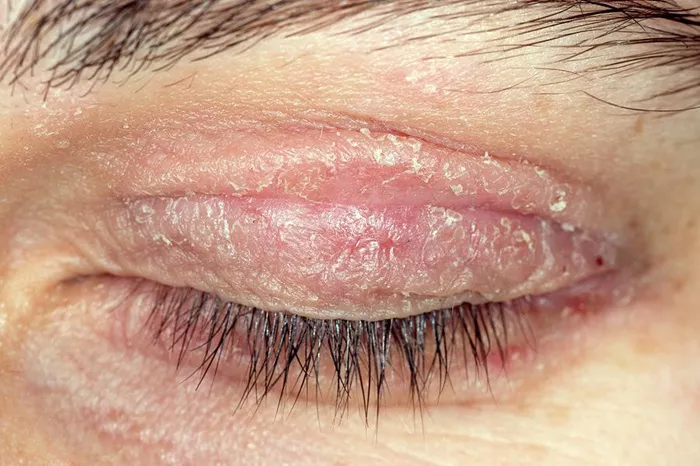Eyelid dermatitis, characterized by redness, itching, swelling, and flaking of the eyelids, can be a distressing condition affecting both physical comfort and aesthetic appearance. Finding the most effective treatment for eyelid dermatitis requires understanding its underlying causes, triggers, and various management options. This comprehensive article aims to explore the best treatment strategies for eyelid dermatitis, encompassing medical interventions, lifestyle modifications, and preventive measures.
Understanding Eyelid Dermatitis
What is Eyelid Dermatitis?
Eyelid dermatitis refers to inflammation of the eyelids, commonly caused by allergic reactions, irritants, or underlying skin conditions such as eczema or seborrheic dermatitis. It presents with symptoms such as:
Redness: The eyelids may appear red or inflamed.
Itching: Persistent itching or burning sensation on the eyelids.
Swelling: Swelling or puffiness of the eyelids.
Flaking: Dry, flaky skin or scales on the eyelids.
Discomfort: Irritation or discomfort, especially with blinking or rubbing.
Causes and Triggers
Eyelid dermatitis can be triggered by various factors, including:
Allergens: Common allergens such as pollen, pet dander, cosmetics, or certain medications can trigger allergic reactions.
Irritants: Exposure to harsh chemicals, soaps, detergents, or environmental pollutants can irritate the delicate skin of the eyelids.
Underlying Skin Conditions: Conditions like eczema (atopic dermatitis), seborrheic dermatitis, or contact dermatitis can affect the eyelids.
Microorganisms: Bacterial or fungal infections can lead to eyelid inflammation.
Personal Care Products: Cosmetics, skincare products, or eye makeup may contain ingredients that cause irritation or allergy.
Treatment Approaches for Eyelid Dermatitis
1. Medical Interventions
Medical treatment options for eyelid dermatitis depend on the underlying cause, severity of symptoms, and individual factors. Common interventions include:
Topical Corticosteroids
Topical corticosteroids are often prescribed to reduce inflammation and relieve symptoms of eyelid dermatitis. These medications come in various strengths and formulations, and their use should be monitored by a healthcare professional to prevent potential side effects, especially with prolonged use.
Topical Calcineurin Inhibitors
Topical calcineurin inhibitors, such as tacrolimus or pimecrolimus, are non-steroidal medications that suppress inflammation and can be effective for managing eyelid dermatitis, particularly in sensitive areas like the eyelids or face.
Antihistamines
Oral or topical antihistamines may help relieve itching associated with allergic reactions in eyelid dermatitis. However, caution should be exercised with topical antihistamines to avoid irritation or sensitization of the eyelid skin.
Antibiotics or Antifungals
If eyelid dermatitis is complicated by bacterial or fungal infections, topical or oral antibiotics or antifungal agents may be prescribed to address the underlying infection.
Moisturizers and Emollients
Regular use of moisturizers or emollients can help hydrate and soothe the delicate skin of the eyelids, reducing dryness, flaking, and irritation. Non-irritating, fragrance-free formulations are recommended to minimize the risk of exacerbating symptoms.
2. Avoidance of Triggering Factors
Identifying and avoiding triggers is essential for managing eyelid dermatitis effectively. Patients should be advised to:
Identify Allergens: Undergo allergy testing to identify specific allergens triggering allergic reactions.
Patch Testing: Undergo patch testing to identify contact allergens in personal care products, cosmetics, or skincare products.
Avoid Irritants: Minimize exposure to harsh chemicals, soaps, detergents, or environmental pollutants that can irritate the eyelids.
Cosmetic Selection: Choose hypoallergenic, fragrance-free cosmetics and skincare products to reduce the risk of irritation or allergy.
3. Warm Compresses
Warm compresses applied to the eyelids can help alleviate symptoms of eyelid dermatitis by reducing inflammation, relieving itching, and promoting healing of the skin. Patients should be instructed to use clean, warm compresses for a few minutes several times a day.
4. Eyelid Hygiene
Maintaining good eyelid hygiene is crucial for managing eyelid dermatitis. Patients should be advised to:
Gently Cleanse: Cleanse the eyelids daily with a mild, non-irritating eyelid cleanser or baby shampoo diluted in warm water to remove debris, oil, or allergens.
Avoid Rubbing: Avoid rubbing or scratching the eyelids, as this can exacerbate inflammation and irritation.
Pat Dry: Gently pat the eyelids dry after cleansing to avoid excessive friction or trauma to the skin.
5. Cooling Eye Masks
Cooling eye masks or gel packs can provide relief from itching, swelling, or discomfort associated with eyelid dermatitis. Patients can use these masks as needed to alleviate symptoms and soothe the eyelids.
6. Nutritional Supplements
Certain nutritional supplements, such as omega-3 fatty acids or vitamin D, may have anti-inflammatory properties and can potentially benefit individuals with eyelid dermatitis. However, more research is needed to establish their efficacy in managing this condition.
7. Stress Management Techniques
Stress can exacerbate symptoms of eyelid dermatitis. Patients should be encouraged to practice stress management techniques such as deep breathing, meditation, yoga, or progressive muscle relaxation to reduce stress levels and improve overall well-being.
8. Phototherapy
Phototherapy, using specific wavelengths of light to target inflammation and immune dysregulation, may be considered in refractory cases of eyelid dermatitis. However, this treatment modality requires specialized equipment and should be administered under the supervision of a dermatologist or ophthalmologist.
Conclusion
Eyelid dermatitis can significantly impact quality of life, causing discomfort, aesthetic concerns, and functional impairment. Effective management of eyelid dermatitis involves a multifaceted approach, including medical interventions, lifestyle modifications, and preventive measures. By addressing the underlying causes, avoiding triggering factors, and implementing appropriate treatments, individuals with eyelid dermatitis can experience symptom relief, improved eyelid health, and enhanced overall well-being. It is essential for healthcare providers to collaborate with patients to tailor treatment plans to their specific needs and preferences, promoting optimal outcomes and long-term management of this challenging condition.
[inline_related_posts title=”You Might Be Interested In” title_align=”left” style=”list” number=”6″ align=”none” ids=”9575,9572,9501″ by=”categories” orderby=”rand” order=”DESC” hide_thumb=”no” thumb_right=”no” views=”no” date=”yes” grid_columns=”2″ post_type=”” tax=””]































